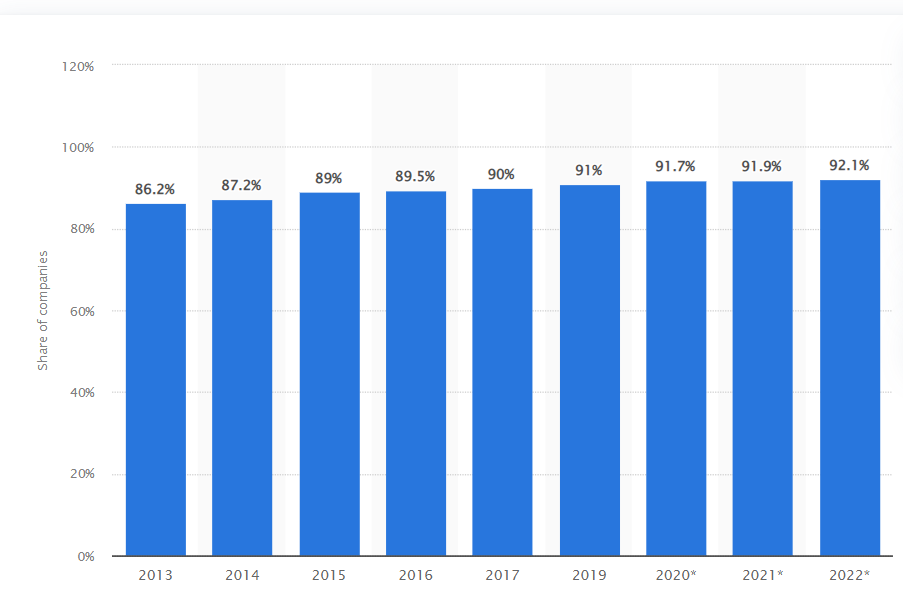Social media has become an indispensable part of any brand’s marketing strategy. And it’s easy to see why.
These platforms offer unparalleled reach and engagement opportunities for businesses of all sizes.
However, to truly connect with your target audience and build a strong brand identity, it’s essential to adopt a localized approach to social media marketing.
Localization will ensure your message doesn’t get lost in translation.
In this guide to social media localization, I’ll share six tips to help your brand thrive in different regions and cultures.
What is Social Media Localization?
Social media localization is the process of adapting your social media content to resonate with the specific cultural context of your target audience.
This involves more than just translating the words – it’s about understanding the cultural references, humor, and interests that will connect with your audience on a deeper level.
“To do business in a particular market, you need to speak their language, not in terms of simply translating your message, but in a way that evokes the same feelings your message does in your native market.”
– Nataly Kelly, VP of Localization at HubSpot
For instance, imagine your company sells athletic wear. A social media post promoting your new running shoes in the US might feature images of people running in Central Park. To localize this content for the Japanese market, you might swap the Central Park imagery for a scenic location like Mount Fuji.
You’d also want to ensure your messaging aligns with local tastes and customs by modifying other aspects of the post’s image, such as dates and currency formats, to match local conventions.
How can localized content benefit my business?
With over 4.26 billion social media users worldwide, and that number projected to reach 6 billion by 2027, it’s no surprise that 92% of businesses leverage social media marketing.

But merely having a social media presence is no longer enough if you want to target audiences in different countries. Messages that you’re putting out in English may simply fail to resonate with your target audience in different parts of the world.
Therefore to ensure your social media marketing campaigns are successful, you need to speak the language of your prospects and consumers.
In other words, you should focus on social media localization.
The benefits of localization include increased brand authority, customer loyalty and higher engagement that enable businesses to establish a firm foothold in new markets.
6-Step Guide to Social Media Localization
This guide to social media localization will take you through the strategies and steps to use to achieve effective localization and expand into foreign markets with ease.
1. Understand Linguistic and Cultural Nuances
Before you start creating content or localizing for your social media audience, it’s crucial to gain a deep understanding of your target audience’s cultural and linguistic preferences.
By researching the local culture, language, values, and customs of the regions you’re targeting, you can avoid embarrassing translation errors such as this one from Coors.
The slogan “Turn it loose” is perhaps one of the most quoted infamous examples of translation without localization. When translated into Spanish, it is interpreted as “suffer from diarrhea.”
There are also dialects that you need to keep in mind.
For instance, the Arabic spoken in Egypt is different from that spoken in Saudi Arabia or the United Arab Emirates. Getting this difference right could be the difference between a great or failed campaign.
The first step in this guide to social media localization is to understand what resonates with your target audience. Based on that, you can create content that is relevant and appealing while boosting brand value.
This may include using local colloquialisms, humor, and pop culture references that your audience can relate to.
2. Tailor Content for Users Across Regions
Each social media platform has its unique style, tone, and audience. For example, Instagram is more visually oriented, whereas Twitter is more text-based.
You should pay attention to the tone, slang, and style of communication your target audience uses on specific social media platforms in different regions.
For effective social media localization, it’s also important to focus on local events, seasonal festivals, holidays, relevant social issues, or news.
Depending on your industry, even the weather and climate of a region can make a difference.
For example, companies in the fashion industry often promote spring and summer wear in regions with hot weather and vice versa for colder regions. If you’re opting for contactless marketing, it’s important that you get this right for your shoppable Instagram posts.
Before going to the next point in this guide on social media localization, let me emphasize that localization will also include:
- Address formats
- Currency
- Pricing
- Units of measurement
- Date formats
- Market-appropriate visuals and graphics
- Culturally appropriate colors
3. Utilize In-Country Social Media Platforms to Expand Reach
While Facebook, Twitter, and Instagram are popular worldwide, many regions have their own social media platforms that are more popular than the global giants.
For instance, YouTube, Facebook, Reddit, Twitter, and Instagram are the top social media platforms in Australia.
-
Source: SimilarWeb
However, in Germany, only YouTube and Facebook make it to the top social media sites list.

Similarly, WeChat dominates the Chinese market, while VKontakte (VK) is popular in Russia.
Find out how to research the top social media platforms in your target markets in the FAQ section of this article.
4. Use Localized Hashtags to Boost Visibility in Specific Regions
Hashtags and geotags are powerful tools that can help increase the visibility of your social media content in specific regions.
By using localized hashtags and geotags, you can target users who are interested in specific topics or located in particular regions. This can help increase engagement and build brand awareness in new markets.
For example, if you have a picture with cherry blossoms targeting Japan, you can add “さくら” as a hashtag. And you’d be correct. But what you may not know is that a lot of people may also use the Kanji variant, which is “桜”
For maximum effect, consult with native speakers for hashtags or slang that resonate authentically.
5. Invest in Professional Translation Services
As mentioned above, a core part of a solid social media localization strategy is using professional translation services from locals.
By working with professional translators who are native speakers of the target language, you can ensure that your content is high-quality, accurate, and culturally appropriate.
This will help you control business spending, as a more robust localization strategy will result in a higher localization ROI.
Speaking of ROI, investing in the appropriate localization tools to automate and speed up your localization process can further increase your return. Tools such as:
- Integrated machine translation tools
- Localization experts
- Workflow management tools
- CAT (computer-assisted translation) tools
- Translation memory
- Quality assurance and translation-checking tools
- AI Translation tools
6. Partner with Local Influencers to Reach Their Followers
One effective way to increase your brand’s visibility and credibility in new markets is with ambassador marketing by engaging your consumers.
Another way is to partner with local influencers who have established followings in specific regions and can help you reach new audiences quickly.
Don’t forget to track the performance of your posts with tools such as Semrush. Read this Semrush review by Attrock to know if it is the right tool for you.
FAQs
What is an example of content localization?
One great example of content localization is Coca-Cola’s “Share a Coke” campaign. Initially launched in Australia, it featured common first names printed on Coke bottles.
This campaign was so successful that Coca-Cola adapted it for multiple markets worldwide, using names popular in each specific region.
The campaign boosted brand engagement by encouraging people to personalize their Coke experiences, demonstrating the power of understanding cultural preferences.
How do I choose the right social media platforms for different regions?
Here’s a breakdown of how to choose the right platforms:
- Market Research: Start by researching which social media platforms are most popular in your target regions. Tools like Statista and Datareportal provide valuable insights.
- Demographic Alignment: Understand the demographics of users on each platform. For example, TikTok skews younger, while LinkedIn focuses on professionals. Ensure your target audience aligns with the platform’s user base.
- Content Fit: Consider the type of content you want to share. Instagram is ideal for visuals, while Twitter works for short text updates. Choose platforms that best suit your content strategy.
How do I measure the success of my social media localization efforts?
Track these key metrics to gauge your localization success:
- Engagement: Look at increases in likes, comments, shares, and click-through rates on your localized content compared to non-localized content.
- Reach: Monitor how many people within your target region are seeing your posts.
- Conversions: Track website traffic, leads generated, and sales that directly result from your localized social media efforts.
- Sentiment Analysis: Use tools to analyze the overall tone of comments and mentions related to your localized content. Positive sentiment indicates a successful localization strategy.
Pro Tip: Use social media analytics tools specific to each platform for in-depth insights, and A/B testing to compare the performance of different localized content variations.
Get Ahead with Localization
Ready to unlock the true potential of social media marketing on a global scale?
Transifex offers seamless localization solutions tailored to your needs. Choose from professional translations, AI-powered tools, or leverage your existing translations through Translation Memory.
Don’t get left behind! Adapt your content for global markets and conquer localization with Transifex. Go global, go Transifex.
Start your free Transifex trial today and experience the difference social media localization can make for your brand!










